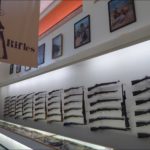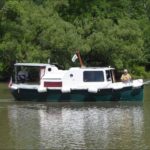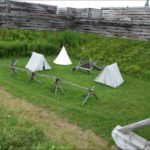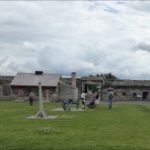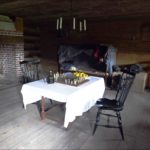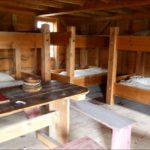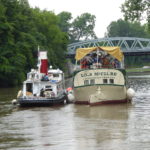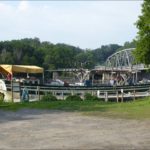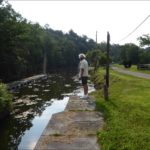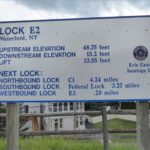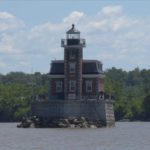July 21-22, 2017 Friday & Saturday
July 21-Friday: Today was a lovely day, beautiful homes, small river homes, farms, corn, hay, herons, kingfishers, otters, eagles and more, great cruise down the river. The sad part is that they have had so much rain that many docks are under water and the water is inching towards their homes.
As we transited one of the locks, I asked the lockmaster if there were any female lockmasters on the Erie, we had not seen one. He said he thought there was one or two but should be more. He then disappeared into his building and came back out with an application form for me, maybe my new calling.
At Mile 201.38, canal junction of the Erie and Cayuga-Seneca Canals, we decided to take Lee’s advice and do a side trip to Seneca Falls, which is about 8 miles south of the Erie Canal. To get there we had to transit Lock CS1 – 7.5 feet and the ‘stair case locks’ at CS2 and CS3 – both 25 feet, they are called stair case locks because you go directly from one lock into the next lock.
In the early 1800’s Seneca Falls was a thriving mill town, when Seneca River was dammed near the current Locks C2 & C3 it created a 50-foot deep lake, Van Cleef Lake, that submerged many of the mills and much of downtown Seneca Falls. We are looking forward to visiting the town as it is known as the birthplace of the women’s rights movement, houses the National Women’s Hall of Fame, and claims to be the town that Bedford, from the 1946 film “It’s A Wonderful Life,” was modeled after.
Tonight we are at Seneca Falls Free Dock and plan to stay until Sunday, most of the free docks have a 48-hour limit.
July 22-Saturday: This has been the coolest day we have had in months, it was so pleasant. We spent most of the day exploring the town and visiting several of their museums, starting at the Seneca Museum which showcased the development and reform movements of the area.
The First Women’s Rights Convention took place at Wesleyan Chapel in July 1848. Outside the chapel is a waterwall with the Declaration of Sentiments engraved in stone. This document is recognized as the founding document of the women’s rights movement and is modeled after the Declaration of Independence, boldly proclaiming that “all men and women are created equal.”
The Seneca Falls Historical Society is located in a 23 room 1880 Queen Ann Style Mansion, unfortunately, by the time we made it there they were closed. While looking at the Historical Society buildings we were chatted-up by a local couple who shared much of the town history with us. She was born in Clyde, NY he, an ex-FBI agent in Seneca Falls. They shared stories about the town and showed us the street that led into the valley before it was flooded. Fun day!




























































































